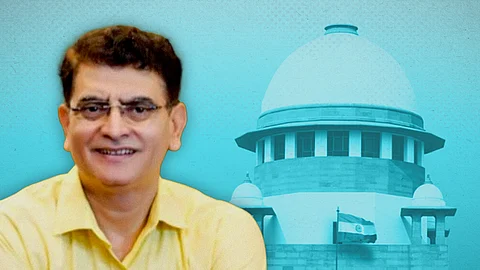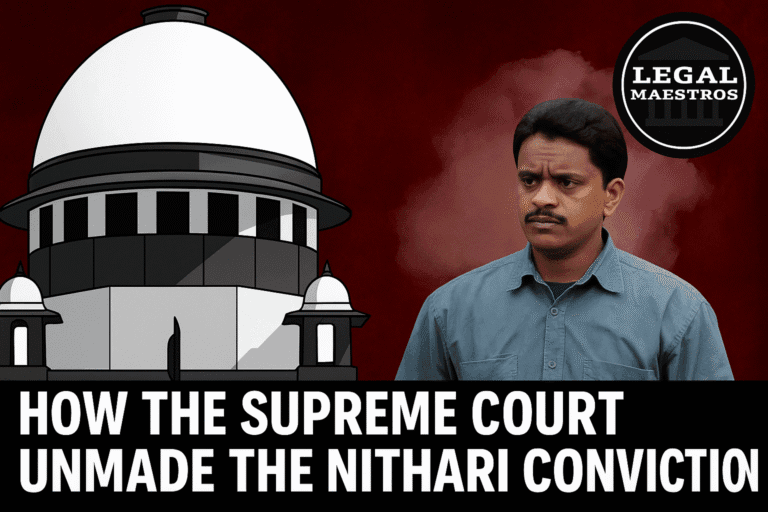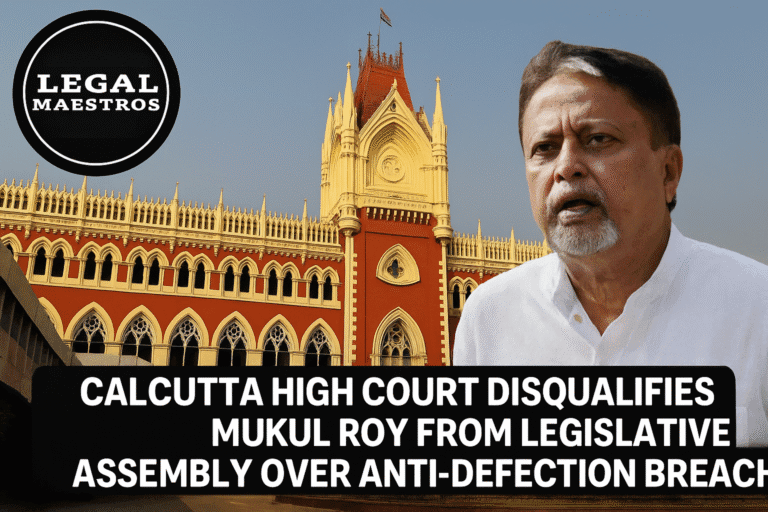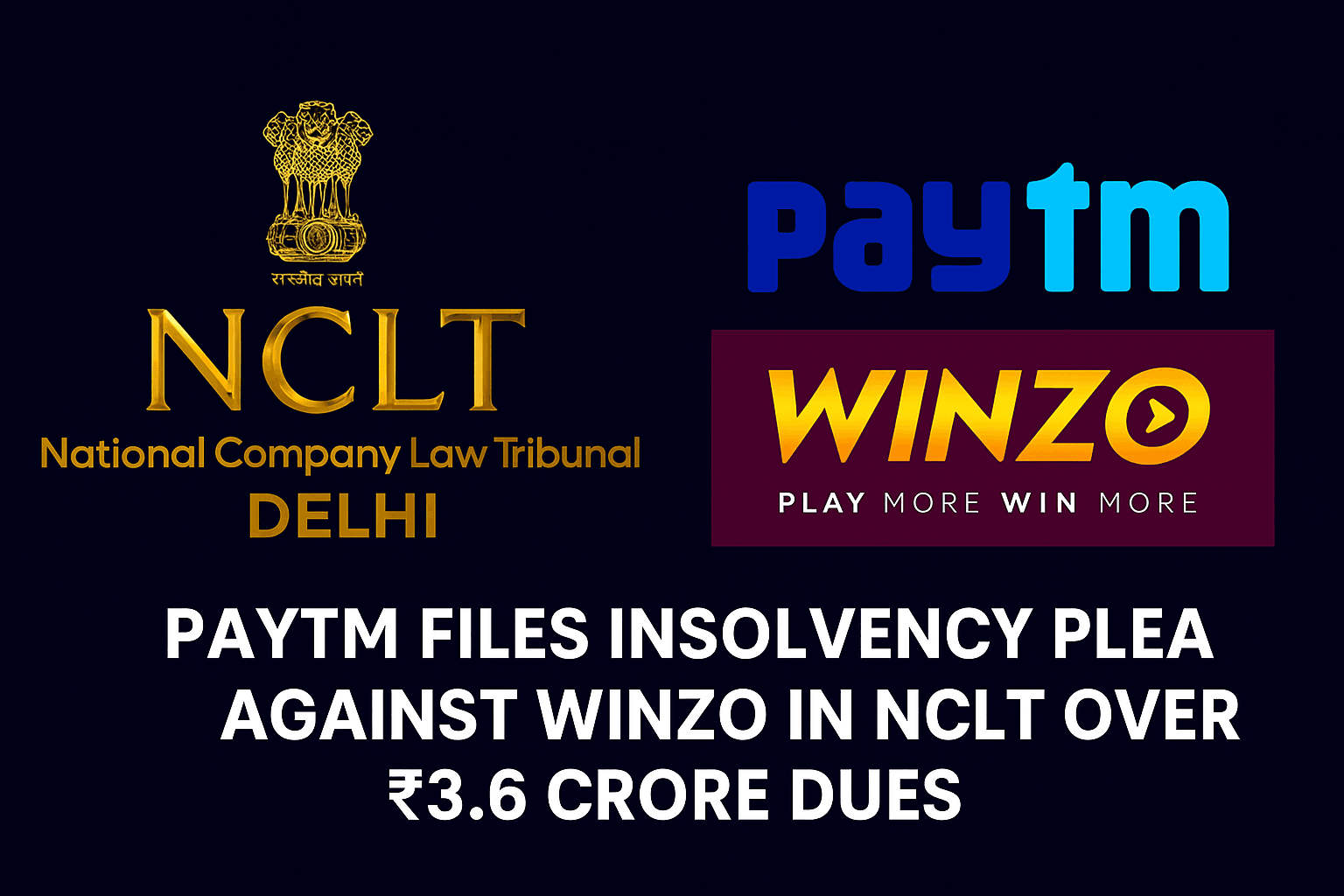
Why the Supreme Court Initiated a Suo Motu Contempt Case Against Ajay Shukla
Introduction
Late in the month of May 2025, the Supreme Court of India astonished many people by initiating a criminal contempt process against Ajay Shukla, a journalist and YouTuber based in Chandigarh.
As a result of the court’s decision to act on its own initiative, rather than in response to a petition submitted by another party, the court demonstrated the seriousness with which it regarded certain remarks made in public about judges.
For any queries or to publish an article or post or advertisement on our platform, do call at +91 6377460764 or email us at contact@legalmaestros.com.
This case has sparked a discussion on the boundaries of free speech, the safeguarding of judicial dignity, and the expansive powers that the Supreme Court has in order to maintain its own authority.
Contempt Proceedings Under Suo Motu Powers
In accordance with Indian law, the Supreme Court has the authority to commence contempt proceedings on its own initiative.
For any queries or to publish an article or post or advertisement on our platform, do call at +91 6377460764 or email us at contact@legalmaestros.com.
The Contempt of Courts statute, which was passed in 1971, gives the court the ability to penalize anybody whose words or acts scandalize the court or hinder the administration of justice.
This “suo motu” authority is a result of this statute. Suo motu contempt is a legal doctrine that is seldom used since it has traditionally been reserved for cases that involve evident and serious interference with judicial powers. When the court decided to utilize it for the first time in 2025, it was a clear indication that the words in issue had reached a certain level of seriousness.
For More Updates & Regular Notes Join Our Whats App Group (https://chat.whatsapp.com/DkucckgAEJbCtXwXr2yIt0) and Telegram Group ( https://t.me/legalmaestroeducators )
For any queries or to publish an article or post or advertisement on our platform, do call at +91 6377460764 or email us at contact@legalmaestros.com.
Ajay Shukla and the Varprad Media Channel
Through his digital news portal, Varprad Media Pvt. Ltd., Ajay Shukla, who once worked as a journalist for television, has amassed a following. Shukla’s YouTube channel, which is based in Chandigarh, has a combination of political commentary, interviews, and legal analysis.
He often adopts a belligerent tone and is unafraid of controversy. Over the course of many years, his videos have been popular among viewers who are looking for insightful perspectives on current events.
However, a recent post of his has launched him into unknown terrain when it seemed to attack a sitting Supreme Court justice with a pejorative moniker.
For any queries or to publish an article or post or advertisement on our platform, do call at +91 6377460764 or email us at contact@legalmaestros.com.
The “Godi Judge” Remark and Video Content
After a successful career, Justice Bela M. Trivedi stepped away from her position, and the video that provoked the court’s action commemorated the celebration of her retirement.
In the context of her departure, Shukla referred to her as a “Godi judge,” which is a phrase that is often used in contemporary political slang and implies an excessive level of subservience to the central authority.
The single epithet was sufficient for the court to consider the comment to be scandalous, despite the fact that he did not mention any more claims of prejudice or corruption. The tape had a short remark on recent verdicts; nevertheless, the flippant label was the one that raised the ire of the official.
For any queries or to publish an article or post or advertisement on our platform, do call at +91 6377460764 or email us at contact@legalmaestros.com.
Legal Provisions Governing Contempt of Court
According to the Contempt of Courts Act, any publication or statement that “scandalizes” the court or diminishes its authority is considered to be a kind of criminal contempt.
Furthermore, it prohibits the imputing of inappropriate motivations or wrongdoing to judges in situations when there is no substance for such allegations. Under Order XV of the Supreme Court Rules, which advises against making comments on current or ended matters in a manner that might damage trust in the judicial system, this is elaborated upon.
These restrictions are a reflection of the law’s attempt to find a compromise between the right to free speech and the need to maintain public trust in the impartiality of adjudication.
For any queries or to publish an article or post or advertisement on our platform, do call at +91 6377460764 or email us at contact@legalmaestros.com.
Why the Supreme Court Took Suo Motu Action
The fact that the court chose to continue on its own indicates that it did not consider Shukla’s comment to be just a critical viewpoint but rather a direct assault on the dignity of the judiciary.
By referring to a judge who was already in office as “Godi,” the court recognized the possibility that its authority may be diminished in the eyes of the general public.
According to the cause list, the hearing was given the official title “In Re: Scandalous Remarks Made By Mr. Ajay Shukla, Editor-in-Chief, Varprad Media Pvt. Ltd., A Digital Channel,” which indicated that the investigation would concentrate only on determining whether or not his statements fit the criteria for contempt.
For any queries or to publish an article or post or advertisement on our platform, do call at +91 6377460764 or email us at contact@legalmaestros.com.
Arguments Surrounding Judicial Independence and Public Confidence
Judges should be protected against unfounded assaults that have the potential to influence public opinion and put pressure on judicial decision-making, according to those who are in favor of the step made by the court. They argue that negative designations, even if they are presented in the guise of opinions, have the potential to undermine the impartiality that serves as the foundation of the judicial system. Critics, on the other hand, consider the measure to be too harsh and warn that the use of contempt powers against members of the media might stifle valid debate and discourage investigative journalism about the judicial system.
Procedural Steps and Hearing Before the Bench
The case was scheduled to be heard by a panel consisting of three judges, including the Chief Justice of India, B.R. Gavai, Justice Augustine George Masih, and a third judge who would be appointed at a later date. During the hearing, it is anticipated that Shukla would provide a response to the concerns raised by the court, which may take the form of written comments or oral arguments.
During the hearing, it will be determined whether or not his single comment constitutes a “scandal” according to the law, and whether or not a public apology or retraction might be sufficient to avoid penalty. In the event that he is found guilty, he may be subject to a fine or a short period of jail.
For any queries or to publish an article or post or advertisement on our platform, do call at +91 6377460764 or email us at contact@legalmaestros.com.
Potential Defences and Mitigating Factors
In order to defend himself, Shukla can claim that the words he used were considered to be fair remark and that they were protected by the right to free speech. It is possible that he would propose that the court overreacted by pointing out that there was no particular charge of prejudice or corruption other than the derogatory term.
There are a number of mitigating elements that may be pushed to argue that the effect was modest. Some of these reasons include the setting of a retirement homage and the length of the comment. However, the fact that the court is ready to pursue suo motu contempt indicates that it has a limited tolerance for even brief and critical designations of its members.
Implications for Media and Public Discourse
Concerns have been raised over the strong social media ecosystem in India as a result of the beginning of this process against a notable digital journalist. When talking about judges or cases that are still ongoing, content makers might now consider the possibility of contempt actions with more caution.
For any queries or to publish an article or post or advertisement on our platform, do call at +91 6377460764 or email us at contact@legalmaestros.com.
It is possible that this will result in self-censorship or a chilling impact on legal analysis that is available to the public. Particularly in this day and age, when the borders between conventional media and other forms of expression are becoming more hazy, there will be a dispute among members of the legal profession over whether or not the court need to establish more specific criteria for criticism that is acceptable.
Wider Impact on the Judiciary’s Image
The commitment of the Supreme Court to respecting its power was underlined by the court’s prompt and public action. Some observers believe that this contributes to the perception of a powerful and self-assured court that is able to maintain its own dignity.
Others are concerned that the exercise of contempt powers may be seen as an intolerance of criticism, which would then contribute to the perpetuation of tales of opacity inside the highest court. Going ahead, the public’s impressions of judicial responsibility will be shaped by the manner in which the court handles the consequences, which will include striking a balance between firmness and transparency.
For any queries or to publish an article or post or advertisement on our platform, do call at +91 6377460764 or email us at contact@legalmaestros.com.
Conclusion
Ajay Shukla was subjected to a suo motu contempt action by the Supreme Court, which highlights the contradiction that exists between the right to free expression and the need to maintain judicial respect. In the course of the proceeding, it will be put to the test the parameters of what constitutes improper remark on judges, as well as the extent to which the court is able to police public debate.
Beyond the scope of this particular case, the decision may have a significant impact on media practices, legal analysis, and the larger balance that exists between an independent court and a free press in India’s developing democracy.




![Research Assistantship @ Sahibnoor Singh Sindhu, [Remote; Stipend of Rs. 7.5k; Dec 2025 & Jan 2026]: Apply by Nov 14, 2025!](https://legalmaestros.com/wp-content/uploads/2025/11/Gemini_Generated_Image_s0k4u6s0k4u6s0k4-768x707.png)
![Karanjawala & Co Hiring Freshers for Legal Counsel [Immediate Joining; Full Time Position in Delhi]: Apply Now!](https://legalmaestros.com/wp-content/uploads/2025/11/Gemini_Generated_Image_52f8mg52f8mg52f8-768x711.png)